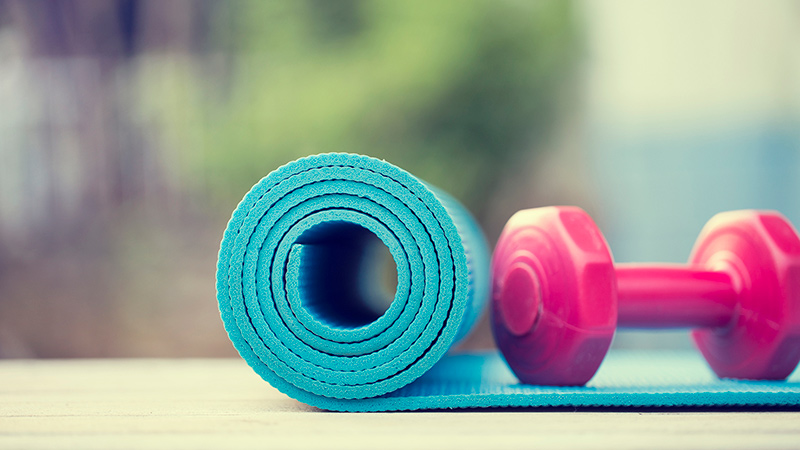Breaking Down Barriers to Fitness

Most of us are familiar with the common barrier to regular physical activity -- lack of time. Work, family obligations and other realities of daily life often get in the way of our best intentions to be more active. There are many other barriers that vary by person and circumstance.
If you're committed to physical activity and setting goals for yourself, it’s helpful to first identify your personal barriers. By troubleshooting and developing tactics in advance, you’ll have better success overcoming them.
Common barriers and solutions
Here are some of the more common barriers and solutions for overcoming them:
- Barrier: Lack of time
Solutions: Monitor your activities for one week and identify at least three, 30-minute slots you could use for physical activity. Select activities that you can fit into your home or work routine so you’re not wasting time on transportation to another place to achieve them. Walking in your neighborhood, climbing stairs at your office or exercising while you watch TV are all good options.
If you’re glued to your phone for work calls, you don’t have to be stuck in a chair. Make it a habit to walk and talk. Some workplaces have walking paths to make it even easier to burn while you earn. Schedule a walking meeting to fulfill a work agenda or party planning, and feel energized.
- Barrier: Friends and family don’t share your interest in physical activity
Solutions: Share your fitness and/or health goals with friends and family, and ask for their support. Get active together as a family and you’ll all benefit. Since dogs and other pets are family members too, set morning and evening times when parents and children walk Daisy or Duke together.
Invite friends to participate in physical activity with you. Join a local YMCA or walking club to find people with similar goals to offer support. Research shows that joining a group or taking a class with others increases exercise time and health benefits. If you need childcare coverage, try alternating workout times with a friend and her family. - Barrier: Lack of motivation and/or energy
Solutions: Plan ahead by keeping sneakers in the car or at work, because if you stop at home to change, you may find the couch instead. Schedule physical activity for specific times/days, and “check” it off your list or calendar each time you complete it. Determine what time of day you feel more energetic, and try to fit the activity into that time frame. Join an exercise group or class and seek others in the group to help motivate you and keep you accountable for attending.
Keep in mind that taking that first step, cycle, or pose is often the hardest part, but once you’re moving, your lack of motivation should fade. Even short bouts of activity can reduce stress and improve mood. - Barrier: Lack of resources/equipment due to expense or travel.
Solutions: Select activities that require minimal facilities or equipment, such as walking, jogging, jumping rope or calisthenics. Identify inexpensive, convenient resources in your community, such as parks and recreation programs, worksite wellness groups and walking clubs.
Check out some of the many free virtual exercise activities such as AHA’s 10-minute Home Workout, or create your own circuit workout at home. Get whole-body healthy with AHA's streaming series on Facebook and YouTube featuring yoga, strength and cardio workouts, meditation and more.
Pack walking shoes for travel and walk often during those days. Many hotels offer fitness facilities: commit to at least 20 minutes in the workout room before morning coffee or your evening meal. - Barrier: Feeling uncertain or uncomfortable
Solutions: Some people come to exercise naturally, while others develop a physically active lifestyle as learned behavior. Talk to your health care professional about what exercises suit your age, ability, and health. Think about what activities you might like to do or try. If you feel that exercise takes you out of your comfort zone, start slow.
Walking is often the easiest and most convenient activity. Recruit a walking partner, wear comfortable shoes and choose a safe and pleasant location to walk. If you feel unsteady on your feet, use walking poles (even old ski poles) to help maintain your balance. There are also other good activities you can do by holding onto a chair or lying on an exercise mat. A beginner group exercise class with people of similar age is also a good place to start.
Breathe deep and know that any exercise is better than none, and will benefit your physical and emotional health when done regularly.





